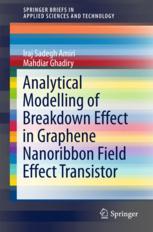

Most ebook files are in PDF format, so you can easily read them using various software such as Foxit Reader or directly on the Google Chrome browser.
Some ebook files are released by publishers in other formats such as .awz, .mobi, .epub, .fb2, etc. You may need to install specific software to read these formats on mobile/PC, such as Calibre.
Please read the tutorial at this link: https://ebookbell.com/faq
We offer FREE conversion to the popular formats you request; however, this may take some time. Therefore, right after payment, please email us, and we will try to provide the service as quickly as possible.
For some exceptional file formats or broken links (if any), please refrain from opening any disputes. Instead, email us first, and we will try to assist within a maximum of 6 hours.
EbookBell Team

5.0
88 reviewsThis book discusses analytical approaches and modeling of the breakdown voltage (BV) effects on graphene-based transistors. It presents semi-analytical models for lateral electric field, length of velocity saturation region (LVSR), ionization coefficient (α), and breakdown voltage (BV) of single and double-gate graphene nanoribbon field effect transistors (GNRFETs). The application of Gauss’s law at drain and source regions is employed in order to derive surface potential and lateral electric field equations. LVSR is then calculated as a solution of surface potential at saturation condition. The ionization coefficient is modelled and calculated by deriving equations for probability of collisions in ballistic and drift modes based on the lucky drift theory of ionization. The threshold energy of ionization is computed using simulation and an empirical equation is derived semi-analytically. Lastly avalanche breakdown condition is employed to calculate the lateral BV. On the basis of this, simple analytical and semi-analytical models are proposed for the LVSR and BV, which could be used in the design and optimization of semiconductor devices and sensors. The proposed equations are used to examine BV at different channel lengths, supply voltages, oxide thickness, GNR widths, and gate voltages. Simulation results show that the operating voltage of FETs could be as low as 0.25 V in order to prevent breakdown. However, after optimization, it can go as high as 1.5 V. This work is useful for researchers working in the area of graphene nanoribbon-based transistors.